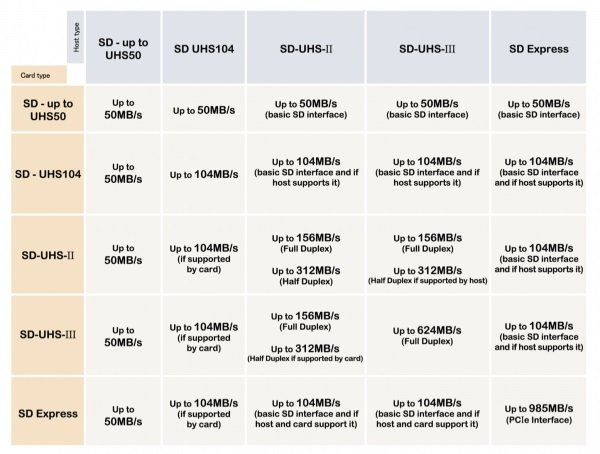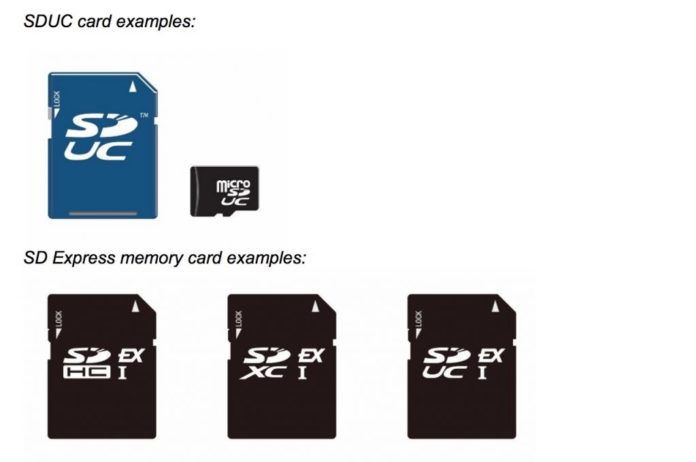It’s not uncommon for consumer and business behaviors to influence major changes in an industry. This type of evolution within an industry happens constantly, and a few current market trends are driving new changes in the realm of removable storage:
- The endlessly growing needs for storage and higher-capacity cards drive higher-performance capabilities that allow reasonable upload/download time for content.
- Client computing is moving quickly from SATA to PCIe Gen3, followed by Gen4, and various memory-related emerging markets – such as autonomous vehicles and connected cars that use multi-sensor data collection as well as 360o and VR/AR cameras; high-resolution gaming; and multi-channel IoT devices – all require high-speed memory interfaces and multi-channel operations.
- Mobile computing infrastructure is evolving, spurring growing performance levels of input/output (IO) communication interfaces as well as internal embedded storage.
- Google Android devices now can use SD memory cards as embedded memory or extended system storage for video/audio content, as well as for storing and running apps, but running Android applications from a card requires higher random performance and sequential performance capabilities.
These new technology trends signal a demand for memory cards with higher speeds, improved protocols, and interfaces, high performance sequential and random access.
To meet this demand, The SD Association announced today SD Express, a new standard for the memory card. This standard adds the popular PCI Express® and NVMe™ interfaces to the legacy SD interface.
The PCIe interface delivering a 985 megabytes per second (MB/s) maximum data transfer rate and the NVMe upper layer protocol enables advanced memory access mechanism, enabling a new world of opportunities for the popular SD memory card. In addition, the maximum storage capacity in SD memory cards grows from 2TB with SDXC to 128 TB with the new SD Ultra-Capacity (SDUC) card. These innovations maintain the SDA’s commitment to backward compatibility and are part of the new SD 7.0 specification.
SD Express keeps pace with growing performance levels of mobile and client computing, imaging and automotive as they adapt faster communication and embedded storage protocols designed to make processing data faster.

Mats Larsson, Senior Market Analyst at Futuresource said, “SD Express’ use of popular PCIe and NVMe interfaces to deliver faster transfer speeds are a savvy choice since both protocols are widely used in the industry today and create a compelling choice for devices of all types. The SD Association has a robust ecosystem with a strong history of integrating SD innovations and has earned the trust of consumers around the world.”
Hiroyuki Sakamoto, SDA president said, “With SD Express we’re offering an entirely new level of a memory card with faster protocols turning cards into a removable SSD. SD 7.0 delivers revolutionary innovations to anticipate the needs of forthcoming devices and content rich and speed hungry applications.”
Al Yanes, PCI-SIG president, and chairman said, “PCI-SIG is pleased to have teamed with the SDA to collaborate on this innovation for the world’s leading removable memory card – SD. PCIe specification conformance tests are available today by major test vendors, offering a significant advantage for any new PCIe adopter.”
SD Express delivers speeds necessary to move large amounts of data generated by data-intense wireless communication, super-slow-motion video, RAW continuous burst mode and 8K video capture and playback, 360 degree cameras/videos, speed-hungry applications running on cards and mobile computing devices, ever-evolving gaming systems, multi-channel IoT devices and automotive to name a few. SD Express will be initially offered on SDUC, SDXC, and SDHC memory cards.
Amber Huffman, NVM Express™ Inc. president said, “NVMe is the industry-recognized performance SSD interface from the client to the datacenter, shipping in millions of units. Consumers will benefit by SD Association adopting the NVMe specification for their new SD Express cards.”
A new white paper provides more details on the new capabilities and features found in the SD 7.0 specification.
